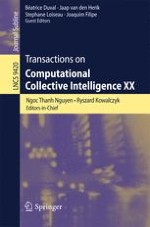2015 | OriginalPaper | Chapter
A Question of Balance
The Benefits of Pattern-Recognition When Solving Problems in a Complex Domain
Authors : Martyn Lloyd-Kelly, Fernand Gobet, Peter C. R. Lane
Published in: Transactions on Computational Collective Intelligence XX
Publisher: Springer International Publishing
Activate our intelligent search to find suitable subject content or patents.
Select sections of text to find matching patents with Artificial Intelligence. powered by
Select sections of text to find additional relevant content using AI-assisted search. powered by
